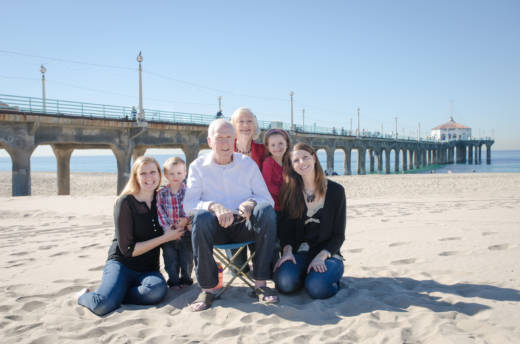California’s End of Life Option Act went into effect on June 9, 2016. The law created a process for dying patients to ask their doctors for a lethal prescription that the patients can then ingest privately, at home.
Since then, at least 500 Californians have received life-ending prescriptions, according to newly released data collected by Compassion and Choices, an advocacy group that promotes aid-in-dying laws nationwide.
The organization also estimated that about 500 health systems and 100 hospice organizations now participate in the California law.
In addition, 80 percent of insurance companies in the state are paying claims involved in the process, such as doctor visits and the prescription itself.
“What the numbers are showing is that the law is working incredibly well,” said Matt Whitaker, the organization's director for California and Oregon. “It’s working as the lawmakers intended.”
But finding a doctor willing to prescribe the life-ending drugs isn’t always easy, in part because the state law allows doctors to opt out of prescribing -- even when the hospital where they work participates in the law.
The decision to prescribe does not come easily for many physicians.
“Even if they’re in support of aid-in-dying, they don’t necessarily want to be the person identified as the 'go-to' person for aid-in-dying. Because that’s a very different implication,” said Dr. Elizabeth Dzeng, an assistant professor of hospital medicine at the University of California, San Francisco.
About three dozen UCSF patients have requested such assistance since last June.
“There is a certain stigma for being known as a physician who writes these prescriptions," agreed Dr. Stephanie Harman, medical director of palliative care services at Stanford Health Care.
Harman decided to study how the law was playing out in the Stanford system. She tracked 13 Stanford patients who received prescriptions for lethal drugs, and learned that half of them initially couldn’t get the drugs from their own doctor.
"There is in the field, in medicine, a question of whether this is an ethical act for a physician,” she explained.
Other hospitals and health systems statewide are also trying to get a sense of what their terminal patients are experiencing. At the University of California, Los Angeles, about 20 patients have received prescriptions since the law went into effect — but only about half of them have gone on to take the meds, said Dr. Neil Wenger, a professor of medicine at UCLA and director of the UCLA Health Ethics Center.
Wenger helped develop a protocol for UCLA doctors, to guide them through the requirements of administering the medication to qualified terminally ill patients.
Among those he’s spoken with, there is a “whole range of preferences” regarding how and whether to participate in the law.
A “relatively small number” oppose the law outright, he said. Many others, however, believe patients should have access to aid-in-dying assistance, but don’t want to be involved in prescribing themselves, since it involves legal requirements, paperwork and conversations that can often be difficult.
“It raises a lot of feelings on the part of the doctor. It is something very, very different than what a doctor does -- which is saving people," Wenger explained. "And it’s complicated. It takes a whole lot of time.”
Dr. Catherine S. Forest is one doctor who has committed herself to taking that time, and assisting patients who want the prescription.
Forest practices family medicine in the Stanford health system. Since the law passed, she’s assisted five patients who came to her practice after their own doctors refused.
Forest says what’s happening now in California is reminiscent of what happened in the 1970s, when abortion became legal. Even among doctors who agreed with the Roe v. Wade decision, there was a reluctance to perform abortions.
“It takes awhile for people to train, to feel comfortable and to provide, and that was because it was not legal, and then it was legal. And there are very few instances where we do that in medicine,” Forest says.
Aid-in-dying, she says, is one of those challenging moments for doctors. She expects it will take time for California to catch up with other states, like Oregon, that have well-established training resources to help doctors learn the process.
John Minor wasn't able to get a prescription at first. His doctors would not write the necessary prescription, so his family started scrambling.
“I started cold-calling just different hospitals and different departments within different hospitals,” Jackie said.
Ultimately, the family took the step of enrolling her father in a Kaiser Permanente insurance plan, and he received the prescription that he took last fall.
“Mentally, he was ready,” said his widow, Sherry Minor. “It was an easy day for him.”
